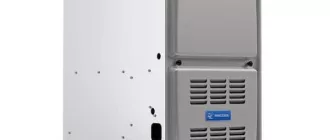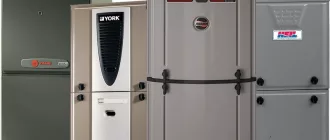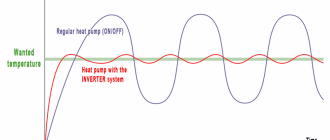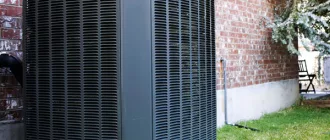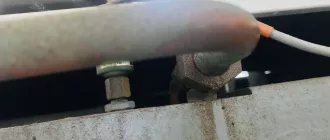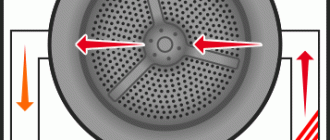
The Upcoming Phase-Out of R22 Refrigerant: How it will Affect Homeowners and What You Need to Know
The phase-out of R22 refrigerant is looming on the horizon, and it’s something that homeowners need to be aware of. This impending change is going to have a significant impact on the way we cool our homes and the cost associated with it.
R22 refrigerant, also known as Freon, has long been used in air conditioning systems to keep our homes cool. However, it has been found to be harmful to the ozone layer and contribute to global warming. As a result, the phase-out of R22 refrigerant has been mandated by international agreements.
For homeowners with older air conditioning systems, this phase-out means that the cost of maintaining and repairing their systems is going to increase. R22 refrigerant will become scarcer and more expensive as the phase-out progresses, making it more difficult and costly to recharge or service these systems.
Fortunately, there are alternatives to R22 refrigerant that homeowners can consider. Newer air conditioning systems use more environmentally friendly refrigerants that are both effective and compliant with the upcoming regulations. While there will be a cost associated with upgrading to a new system, it may be a worthwhile investment in the long run, both for the environment and for homeowners’ wallets.
What is R22 Refrigerant?
R22 refrigerant, also known as hydrochlorofluorocarbon (HCFC-22), is a commonly used refrigerant in air conditioning systems. It has been widely used for several decades due to its excellent cooling properties and low cost.
However, the impending phase-out of R22 refrigerant is causing homeowners to consider alternative options for their air conditioning systems. The phase-out is a result of the Montreal Protocol, an international treaty aimed at protecting the ozone layer and reducing the use of substances that contribute to ozone depletion.
R22 refrigerant is classified as an ozone-depleting substance (ODS) and its production and import have been limited since 2010. The phase-out will culminate in a complete ban on the production and import of R22 refrigerant starting in 2020.
Homeowners with air conditioning systems that use R22 refrigerant will need to consider their options, such as retrofitting their systems to use alternative refrigerants or replacing their systems entirely. Retrofitting can be complex and not always cost-effective, while replacing the system may require a significant investment.
It is important for homeowners to be aware of the impending phase-out and to plan accordingly in order to ensure the continued efficiency and functionality of their air conditioning systems.
| Good cooling properties | Contributes to ozone depletion |
| Low cost | Production and import limited since 2010 |
| Widely available | Complete ban on production and import in 2020 |
Why is R22 Being Phased Out?
The phase-out of R22 refrigerant is due to its negative impact on the ozone layer. R22 contains hydrochlorofluorocarbons (HCFCs), which are known to deplete the ozone layer and contribute to global warming. In an effort to protect the environment and reduce greenhouse gas emissions, the Environmental Protection Agency (EPA) has mandated the phase-out of R22.
This phase-out has direct implications for homeowners using air conditioning systems that rely on R22 refrigerant. As of January 1, 2020, the production and import of R22 are no longer allowed in the United States. This means that homeowners with older air conditioning units that use R22 will face challenges in obtaining this refrigerant in the future.
Homeowners need to be aware that as the supply of R22 dwindles, the cost of servicing and repairing R22-based systems will increase significantly. This is because the limited supply of R22 will drive up prices and make it more difficult to find technicians who are knowledgeable in handling this refrigerant.
In addition, homeowners may also need to consider upgrading their air conditioning systems to ones that use alternative refrigerants, such as R410A. While this may involve a significant upfront investment, it is essential for long-term cost savings and compliance with environmental regulations.
It is crucial for homeowners to understand the implications of the R22 phase-out and take proactive steps to address the situation. By staying informed and working with reputable HVAC professionals, homeowners can ensure the comfort of their homes and contribute to a greener future.
Timeline of the R22 Phase-Out
Homeowners need to be aware of the impending R22 refrigerant phase-out and its impact on their HVAC systems. Here is a timeline of key events related to the phase-out:
- January 1, 2010: The production of new R22 refrigerant is prohibited in the United States due to its harmful effects on the ozone layer.
- January 1, 2020: The import and production of R22 is banned in the United States, resulting in a limited supply of the refrigerant.
- January 1, 2020: The phase-out enters its final stage, with the sale and use of R22 becoming restricted.
- January 1, 2030: The complete phase-out of R22, with its production, import, and use all prohibited in the United States.
It is important for homeowners with older HVAC systems that use R22 refrigerant to take action before the phase-out deadline. They may need to consider replacing their systems or transitioning to alternative refrigerants to avoid any disruptions in their cooling systems.
What Does the R22 Phase-Out Mean for Homeowners?
The impending phase-out of R22 refrigerant has significant implications for homeowners. R22, commonly known as Freon, has long been used as a refrigerant in air conditioning systems and heat pumps. However, due to its harmful environmental effects, the production and import of R22 has been gradually decreasing.
This phase-out means that homeowners with air conditioning systems or heat pumps that rely on R22 will face challenges. Firstly, the cost of R22 refrigerant is likely to rise as the supply decreases. Homeowners may find themselves paying significantly more for repairs and recharging their systems.
Furthermore, finding R22 refrigerant may become more difficult as the phase-out progresses. As the production and import of R22 is restricted, the availability of this refrigerant will decline. Homeowners may have to search harder or rely on alternative refrigerants.
Additionally, the phase-out of R22 may limit homeowners’ options for servicing and maintaining their systems. HVAC technicians may be unable or unwilling to work with R22 systems due to the decreasing availability of the refrigerant. Homeowners may have to explore alternative refrigerants or consider upgrading to newer, more environmentally friendly systems.
It’s important for homeowners to plan ahead and understand the implications of the R22 phase-out. This may include budgeting for potential repairs or replacements, researching alternative refrigerants, and staying informed about industry developments.
Overall, the impending phase-out of R22 refrigerant poses significant challenges for homeowners. It’s essential to take proactive measures to ensure the longevity and efficiency of air conditioning systems and heat pumps in light of this industry-wide change.
Increased Costs for R22 Refrigerant
The impending phase-out of R22 refrigerant has significant financial implications for homeowners. As the production of R22 is being discontinued, the supply of this refrigerant is dwindling, leading to a sharp increase in its cost.
This increase in cost can affect homeowners in several ways. Firstly, if your air conditioning system still uses R22 refrigerant, you may need to recharge it in the future. However, the higher cost of R22 refrigerant means that the cost of recharging your system will also increase significantly.
Additionally, the increased cost of R22 refrigerant may make it more difficult for homeowners to afford repairs or replacements for their air conditioning systems. If a system using R22 needs major repairs or replacement, the cost of the refrigerant can add a significant amount to the overall expense.
Homeowners should also be aware that the cost of R22 refrigerant is likely to continue rising as the phase-out progresses. As the supply of R22 diminishes further, the price will likely increase even more. This could result in even greater financial strain for homeowners who have not yet upgraded their air conditioning systems to use alternative refrigerants.
In conclusion, the impending phase-out of R22 refrigerant means that homeowners can expect increased costs for this particular refrigerant. Recharging, repairing, or replacing air conditioning systems that use R22 will become more expensive, potentially putting a financial burden on homeowners who are unprepared for this change.
Impact on Air Conditioning Maintenance and Repairs
The impending phase-out of the R22 refrigerant has significant implications for homeowners when it comes to air conditioning maintenance and repairs. R22 is commonly used in older air conditioning systems, and with its phase-out, these systems will require alternative refrigerants or complete replacement.
For homeowners with existing air conditioning systems that rely on R22, maintenance and repairs may become more challenging and costly. As the availability of R22 decreases, the price of the refrigerant is likely to increase. Additionally, technicians may need to undergo additional training to work with the replacement refrigerants, further adding to the cost.
Regular air conditioning maintenance will become even more crucial as the phase-out progresses. Homeowners will need to ensure that their systems are operating efficiently and are properly maintained to avoid breakdowns and costly repairs. This may include more frequent filter changes, regular coil cleaning, and inspections to identify any potential issues before they become major problems.
Moreover, the phase-out of R22 will likely lead to an increase in demand for air conditioning repairs and replacements. As homeowners realize the need to upgrade their systems to comply with the new regulations, HVAC companies may face a surge in service requests. This increased demand could potentially lead to longer wait times for repairs and installations, especially during peak seasons.
Homeowners should also be prepared for the potential impact on the lifespan of their air conditioning systems. Older systems that rely on R22 may become less efficient and more prone to malfunctions as the refrigerant becomes scarcer. This could result in a shorter lifespan for these systems and the need for earlier replacements.
In conclusion, the phase-out of R22 refrigerant will have a significant impact on air conditioning maintenance and repairs for homeowners. It is crucial for homeowners to stay informed about the new regulations and work with qualified professionals to adjust their systems accordingly. Regular maintenance and proactive measures will be key in avoiding costly repairs and ensuring the longevity of their air conditioning systems.
The Need for Replacement Options
With the phase-out of R22 refrigerant, homeowners are facing the need for replacement options. This refrigerant has been widely used in air conditioning and cooling systems for many years, but its harmful effects on the ozone layer have led to its ban.
As the phase-out deadline approaches, homeowners need to find alternative refrigerants that are not only environmentally friendly but also compatible with their existing systems. This can be a challenging task, as different systems require different refrigerants, and finding the right replacement can be complex.
One option for homeowners is to retrofit their existing systems to use alternative refrigerants. This involves replacing certain components or modifying the system to work with a different refrigerant. However, retrofitting can be costly and may not be feasible for older systems or those that are already in poor condition.
Another option is to replace the entire system with a new one that is compatible with the approved refrigerants. This can be a more expensive option upfront, but it may be the best long-term solution, especially if the existing system is outdated or in need of frequent repairs.
Homeowners should also consider the energy efficiency of the replacement options. Newer systems are often more energy-efficient, which can lead to lower energy bills and a reduced carbon footprint. It is important to weigh the initial cost of replacement against the potential long-term savings.
Ultimately, homeowners should consult with a qualified HVAC professional to determine the best replacement options for their specific needs. The phase-out of R22 refrigerant presents challenges, but with careful consideration and expert advice, homeowners can find alternative solutions that are both environmentally friendly and efficient.
Benefits of Upgrading to Alternative Refrigerants
With the impending phase-out of R22 refrigerant, homeowners may be facing the need to upgrade their cooling systems. While this may seem inconvenient and costly, there are several benefits to upgrading to alternative refrigerants.
1. Environmental Sustainability: R22 refrigerant, also known as HCFC-22, is a potent greenhouse gas that contributes to ozone depletion. By upgrading to alternative refrigerants such as R410A or R32, homeowners can reduce their carbon footprint and contribute to a more sustainable future.
2. Increased Energy Efficiency: Alternative refrigerants are often more energy-efficient than R22, which can lead to lower energy bills for homeowners. These refrigerants require less electricity to operate and can help homeowners save money in the long run.
3. Improved System Reliability: R22 refrigerant is known for its high operating pressures, which can put stress on cooling systems. Upgrading to alternative refrigerants can help extend the lifespan of the system, reduce the risk of breakdowns, and improve overall system reliability.
4. Availability and Cost: As the phase-out of R22 continues, the availability and cost of this refrigerant are expected to increase. By upgrading to alternative refrigerants now, homeowners can avoid the potential price hikes and scarcity of R22 in the future.
5. Compliance with Regulations: The phase-out of R22 refrigerant is driven by government regulations aimed at protecting the environment. By upgrading to alternative refrigerants, homeowners can ensure compliance with these regulations and avoid any penalties or fines associated with the use of R22.
Overall, upgrading to alternative refrigerants is a smart choice for homeowners facing the impending phase-out of R22. Not only does it benefit the environment, but it also leads to increased energy efficiency, improved system reliability, and long-term cost savings. By making the switch now, homeowners can stay ahead of the game and enjoy a cooler and more sustainable future.
Improved Energy Efficiency
One of the benefits of the impending R22 refrigerant phase-out for homeowners is the opportunity to improve energy efficiency in their homes. R22 refrigerant, also known as Freon, has been used for many years in air conditioning systems. However, it has been found to have a significant negative impact on the environment, contributing to ozone depletion.
By phasing out R22 refrigerant and transitioning to more environmentally-friendly alternatives, homeowners can not only reduce their carbon footprint but also save on energy costs. Newer refrigerants, such as R410A, are more energy-efficient, leading to lower utility bills. These refrigerants require less energy to cool air, making them a more sustainable option for homeowners.
In addition to using more energy-efficient refrigerants, homeowners can also take other steps to improve the energy efficiency of their air conditioning systems. Regular maintenance, such as cleaning or replacing air filters, can help improve airflow and reduce energy consumption. Proper insulation and sealing of windows and doors can also prevent cool air from escaping, leading to more efficient cooling.
Overall, the impending R22 refrigerant phase-out provides homeowners with an opportunity to make their homes more energy-efficient. By transitioning to newer, more environmentally-friendly refrigerants and implementing energy-saving practices, homeowners can not only protect the environment but also save on energy costs in the long run.
Environmentally Friendly Options
With the impending phase-out of R22 refrigerant, homeowners are faced with the challenge of finding environmentally friendly alternatives for their air conditioning systems. Fortunately, there are several options available that can help reduce the environmental impact of cooling systems.
One option is to retrofit your existing system to use a different, more environmentally friendly refrigerant. There are various alternative refrigerants on the market that have a lower global warming potential (GWP) than R22. These refrigerants, such as R410A or R32, are more energy efficient and have a lower impact on the environment.
Another option is to replace your old air conditioning system with a new one that uses a more eco-friendly refrigerant. Many manufacturers now produce air conditioning systems that are designed to be compatible with these alternative refrigerants. By investing in a new system, homeowners can not only comply with the phase-out regulations but also enjoy the benefits of a more efficient and environmentally friendly cooling system.
In addition to choosing the right refrigerant, homeowners can also take steps to improve the efficiency of their cooling systems. This includes regular maintenance, such as cleaning or replacing air filters, sealing air leaks in the ductwork, and ensuring proper insulation. By optimizing the performance of your cooling system, you can reduce energy consumption and minimize the environmental impact.
It’s important for homeowners to stay informed about the phase-out of R22 refrigerant and the environmentally friendly options available. By making the right choices, homeowners can contribute to a more sustainable future while still keeping their homes cool and comfortable.
Long-Term Cost Savings
With the impending phase-out of R22 refrigerant, homeowners may be concerned about the potential costs associated with replacing their existing cooling systems. However, in the long run, the phase-out can actually lead to significant cost savings.
Firstly, the phase-out of R22 refrigerant means that homeowners will no longer need to rely on this outdated and expensive refrigerant for their cooling needs. R22 has been phased out because it contributes to ozone depletion, so switching to a more environmentally friendly refrigerant can have a positive impact on the environment. Additionally, the production and supply of R22 has been dwindling, which has caused the price of the refrigerant to skyrocket in recent years.
By transitioning to newer and more efficient cooling systems that use alternative refrigerants, homeowners can reduce their long-term energy costs. Newer systems are designed to be more energy-efficient, resulting in lower utility bills and reduced maintenance expenses. These systems often have higher SEER (Seasonal Energy Efficiency Ratio) ratings, meaning they can provide the same level of cooling with less energy consumption.
Furthermore, with the phase-out of R22, there will likely be financial incentives and rebates available for homeowners who upgrade their cooling systems. These incentives can help offset the initial cost of purchasing and installing a new system, making the transition more affordable.
In summary, while the initial cost of replacing an R22-based cooling system may seem daunting, homeowners can expect to experience long-term cost savings by transitioning to newer, more efficient systems. Not only will they save on energy costs, but they will also contribute to a healthier environment.
What Homeowners Should Do Next
With the impending phase-out of the R22 refrigerant, homeowners need to take action to ensure their HVAC systems continue to operate efficiently and comply with the new regulations. Here are a few steps homeowners should consider:
1. Schedule an HVAC inspection: Contact a qualified HVAC technician to assess your current system and determine if it uses R22 refrigerant. If it does, the technician can provide recommendations for alternative refrigerants or upgrades.
2. Consider upgrading your HVAC system: If your current system is old or inefficient, it may be worth considering replacing it with a newer model that uses an approved refrigerant. While this can be a significant investment, it can save you money in the long run by improving energy efficiency and reducing maintenance costs.
3. Educate yourself about alternative refrigerants: There are several alternative refrigerants available that can be used as a replacement for R22. Research these options and discuss them with your HVAC technician to determine the best choice for your system.
4. Plan for the future: The phase-out of R22 refrigerant will eventually make it difficult to obtain and costly to service. To avoid unexpected expenses and disruptions, start planning for the future by budgeting for potential system upgrades or repairs.
5. Stay updated on regulations: Keep yourself informed about any updates or changes to the regulations surrounding R22 refrigerant. This will ensure that you remain compliant and prepared for any further developments.
By taking these steps, homeowners can navigate the impending phase-out of R22 refrigerant and ensure their HVAC systems operate efficiently and cost-effectively. Don’t wait until it’s too late! Start planning and taking action today.
Consult with HVAC Professionals
With the impending phase-out of the R22 refrigerant, homeowners are faced with the task of ensuring their HVAC systems are compliant with the new regulations. One of the most important steps in this process is consulting with HVAC professionals.
HVAC professionals have the knowledge and expertise to guide homeowners through the transition from R22 to alternative refrigerants. They can assess the condition of the existing HVAC systems, recommend the best course of action, and provide guidance on replacement options.
When consulting with HVAC professionals, homeowners should ask questions about the timeline for the phase-out, the availability of alternative refrigerants, and the cost implications of upgrading their systems. HVAC professionals can also educate homeowners on the environmental impact of R22 and the benefits of transitioning to more eco-friendly refrigerants.
In addition to providing expert advice, HVAC professionals can handle the technical aspects of replacing or retrofitting systems. They can safely remove the R22 refrigerant and install the new refrigerant, ensuring a seamless transition and optimal performance of the HVAC system.
Consulting with HVAC professionals is essential for homeowners who want to navigate the impending phase-out of the R22 refrigerant. By working with professionals, homeowners can make informed decisions about their HVAC systems and ensure they are compliant with the new regulations.
Consider Upgrading or Replacing Your System
If you are a homeowner with an R22 refrigerant-based HVAC system, it is important to consider upgrading or replacing your system in light of the impending phase-out of R22.
R22 refrigerant, commonly known as Freon, is being phased out due to its harmful effects on the environment. As a result, the production and importation of R22 will be prohibited starting January 1, 2020. This means that R22 will become extremely expensive and difficult to find, making repairs and maintenance of R22 systems costly and inconvenient for homeowners.
Upgrading to a system that uses a more environmentally friendly refrigerant, such as R410A, is a smart choice for homeowners. Not only will you be ahead of the curve when it comes to compliance with the phase-out, but you will also benefit from improved energy efficiency and lower operating costs.
Replacing an R22 system with a new one that uses a different refrigerant is another option to consider. While it may involve a higher upfront cost, it can provide long-term benefits in terms of energy savings and reduced maintenance expenses.
Additionally, upgrading or replacing your HVAC system gives you the opportunity to take advantage of the latest technological advancements. Modern HVAC systems offer enhanced comfort features, improved indoor air quality, and smart-home integration, making your home more comfortable and efficient.
It is important to consult with a qualified HVAC professional who can assess your specific needs and recommend the best course of action. They can help you determine whether upgrading your existing system or replacing it with a new one is the most practical and cost-effective choice for your home.
By acting proactively and considering upgrading or replacing your R22 system, you can avoid the inconvenience and potential higher costs associated with the impending phase-out. Take the necessary steps now to ensure a comfortable and environmentally responsible home for years to come.
Q&A:
What is the R22 refrigerant?
The R22 refrigerant is a hydrochlorofluorocarbon (HCFC) that was commonly used in air conditioning systems. It is known for its cooling properties and was used in many older AC units.
Why is the R22 refrigerant being phased out?
The R22 refrigerant is being phased out due to its negative impact on the environment. It contains chlorine, which contributes to ozone depletion and global warming. In order to protect the ozone layer, many countries have agreed to phase out the use of R22 and other ozone-depleting substances.
What does the phase-out mean for homeowners?
The phase-out of R22 refrigerant means that homeowners with older air conditioning systems that use R22 will need to replace their AC units or retrofit them to use alternative refrigerants. It can be a significant expense for homeowners, but it is necessary to comply with environmental regulations.
Can I still recharge my AC unit with R22 refrigerant?
Yes, you can still recharge your AC unit with R22 refrigerant until the phase-out is complete. However, the production and importation of R22 have been banned, so the availability of this refrigerant is decreasing and its price is increasing. It is recommended to consider alternative refrigerants or upgrading to a new AC system.
What are the alternative refrigerants to R22?
There are several alternative refrigerants to R22, including R410A, R744 (carbon dioxide), and R290 (propane). These refrigerants have less impact on the ozone layer and are more environmentally friendly. However, retrofitting an AC system to use alternative refrigerants may require modifications or even replacement of certain components.
What is the R22 refrigerant?
The R22 refrigerant is a type of hydrochlorofluorocarbon (HCFC) that has been commonly used in air conditioning systems. It is known for its cooling properties and has been a popular choice for many homeowners.
Why is the R22 refrigerant being phased out?
The R22 refrigerant is being phased out because it contains ozone-depleting substances that contribute to global warming. In order to protect the environment and reduce greenhouse gas emissions, the use of R22 refrigerant is being restricted and ultimately phased out.

